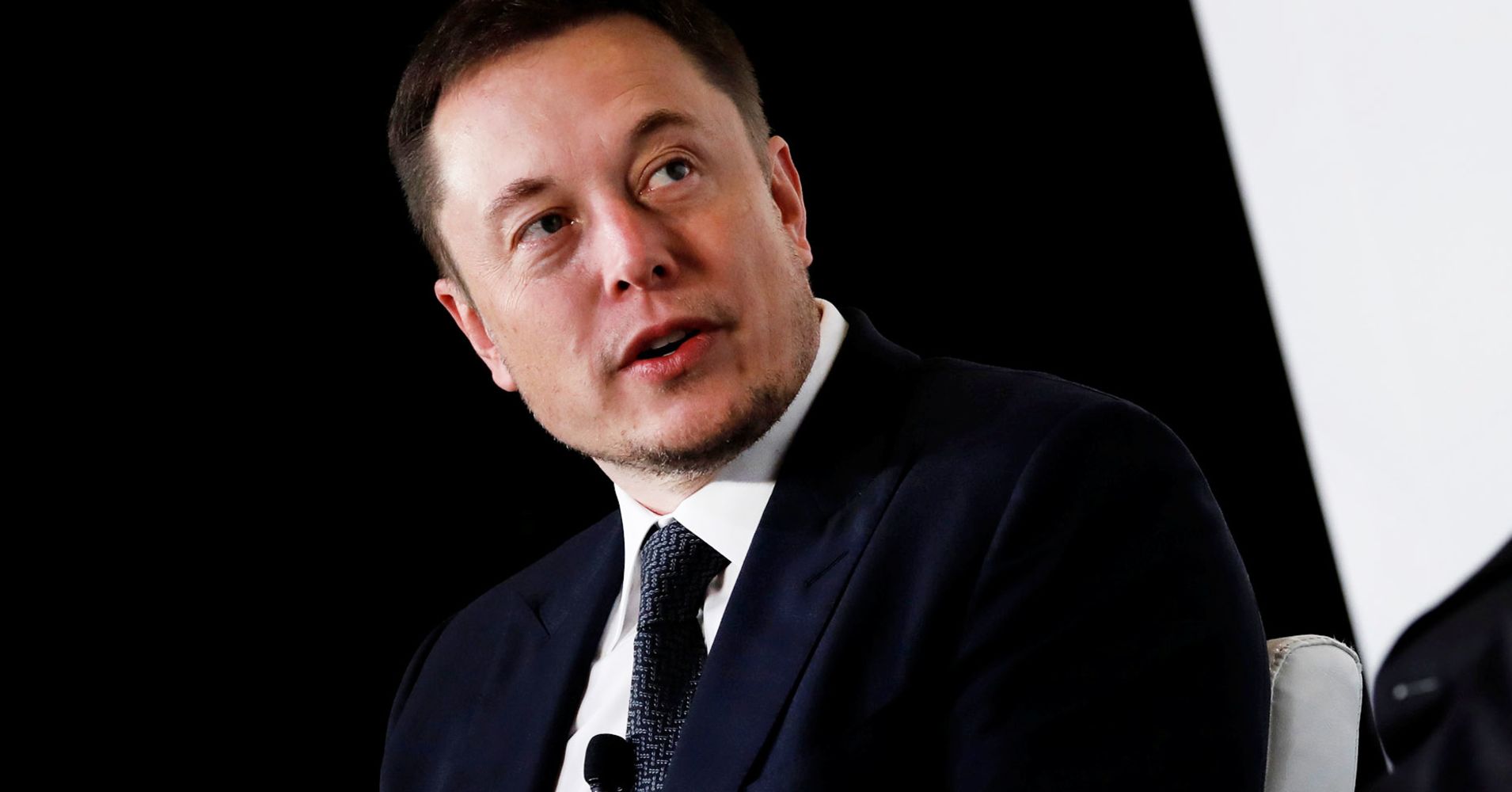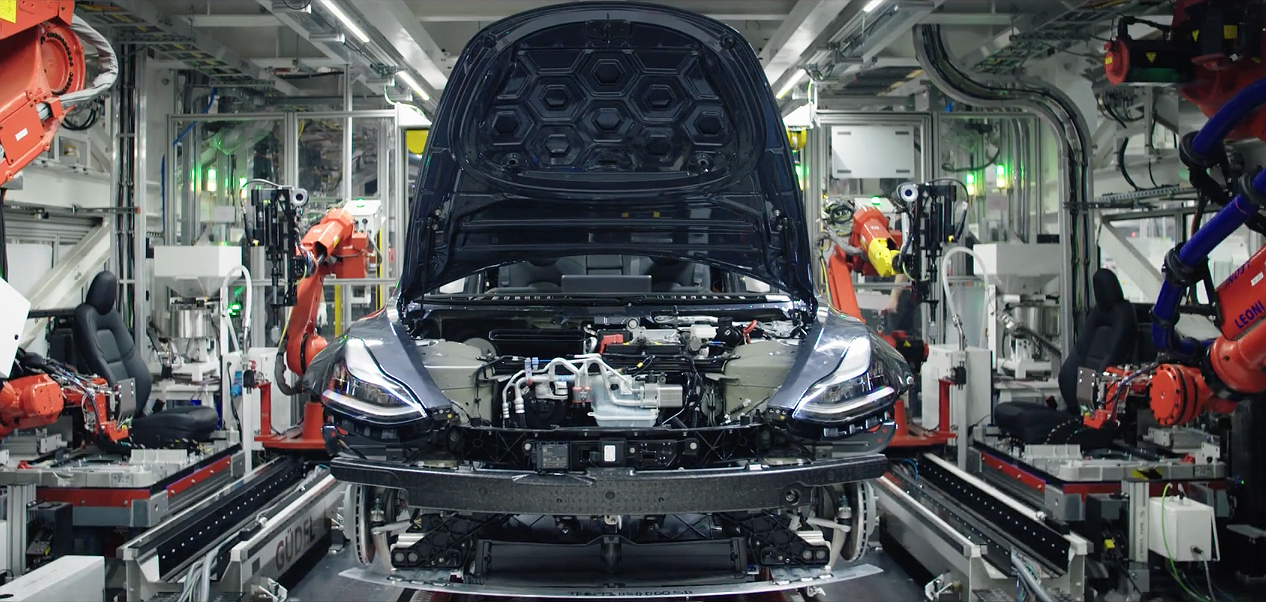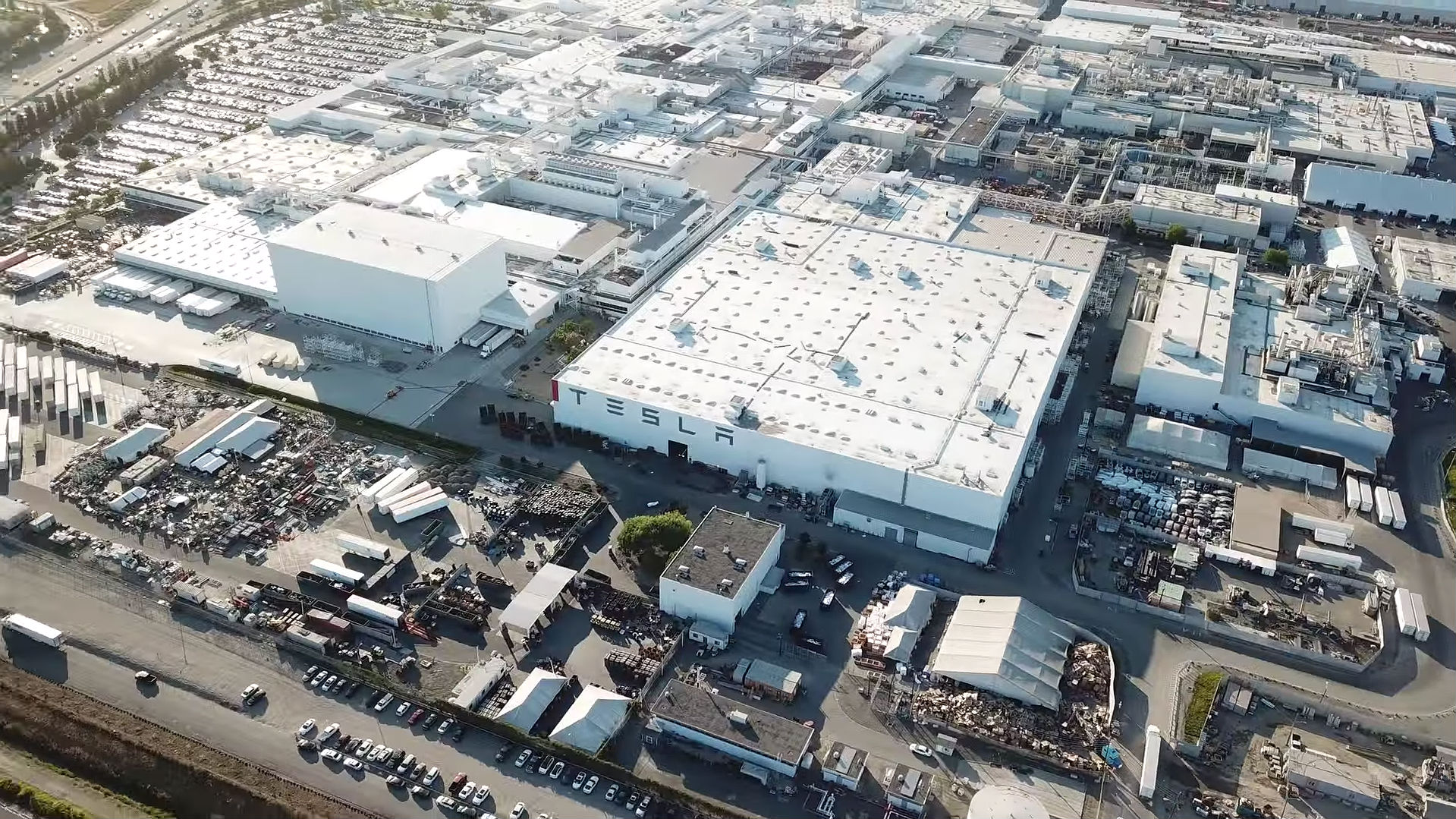

Investor's Corner
Tesla board backs Elon Musk as he faces the ‘most painful’ year of his career
Elon Musk is known for managing multiple companies, but even those who have the gift of multitasking have a limit. Amidst the fallout of his tweets about having funding secured for Tesla’s possible privatization, Elon Musk is starting to feel a little burned out.
The Tesla and SpaceX CEO recently opened up in an interview with the New York Times. The publication noted that during the hourlong session, Musk acknowledged that he was getting exhausted, and that the past year had been incredibly difficult. Musk also admitted that the exhaustion, partly caused by 120-hour work weeks, was starting to take a toll on his physical health.
“This past year has been the most difficult and painful year of my career. It was excruciating. It’s not been great, actually. I’ve had friends come by who are really concerned. There were times when I didn’t leave the factory for three or four days — days when I didn’t go outside. This has really come at the expense of seeing my kids. And seeing friends,” he said.
Much like Tesla’s struggles with the Model 3 production ramp, a lot of the pressure Musk is currently feeling is caused by self-imposed goals. Elon Musk became Elon Musk due to his grit and determination, and he is never one to give up when faced with a seemingly insurmountable challenge. Musk’s relentless nature is one of the core reasons why SpaceX is currently working to conduct crewed demonstration flights of its Crew Dragon spacecraft as early as April 2019, and why the Model 3 is starting to make its presence known in the US auto market.

Jim Ambras, VP product development at Zip2, the first company that Elon and his brother, Kimbal, founded, recalls the insane amount of drive that fuels Musk. In a recent statement to WIRED, Ambras described how Musk would sleep on a bean bag close to his computer just to get work done. The former Zip2 executive also narrated that at one time, the Zip2 team invited Musk to go mountain biking. Unfortunately, the trail proved to be far more challenging than the team expected, even causing Elon’s athletic cousin Russ Rive to get sick when he reached the mountain’s top. Musk, who was not in any way conditioned to undertake such a physical task, was the last one to the summit. Musk finished the climb, but he pushed himself past his limits to do so.
“We’re all at the top waiting for him. We just assumed he turned around and went home. Then we see him coming up around the turn, and he was just completely red. Beet-red. He was riding his bike, he wasn’t walking his bike, and it was just clear that he was killing himself. He just looked like he was torturing himself,” Ambras said.
Well into 2018, Elon Musk is still doing much of the same thing. His hyper-aggressive targets for the Model 3, for one, ultimately caused delays in the vehicle’s production. Being a publicly-traded company, Tesla stock (NASDAQ:TSLA) felt these effects. Today, Tesla shares are known for their wild swings and overall volatility, as well as their penchant for attracting passionate short-sellers. Tesla is currently the most-shorted stock in the market, with more than 30 million shares being sold short. Musk has been affected by short-sellers’ activities, and in his recent interview with the NYT, he admitted that people betting against the company are giving him a lot of stress. Musk even noted that he expects the next few months to be even more difficult, as attacks against Tesla would likely increase.
“(I am) bracing for at least a few months of extreme torture from the short-sellers, who are desperately pushing a narrative that will possibly result in Tesla’s destruction. They’re not dumb guys, but they’re not supersmart. They’re O.K. They’re smartish,” Musk said.

True to Musk’s own predictions, the attacks against Tesla had only increased since talks about the company’s privatization emerged. Musk is currently facing an investigation from the SEC about his tweets, and reports from several media outlets suggest that Tesla’s board is trying to do damage control. In response to some of these reports, Tesla’s board issued a statement to the NYT expressing its full support for the embattled CEO.
“There have been many false and irresponsible rumors in the press about the discussions of the Tesla board. We would like to make clear that Elon’s commitment and dedication to Tesla is obvious. Over the past 15 years, Elon’s leadership of the Tesla team has caused Tesla to grow from a small start-up to having hundreds of thousands of cars on the road that customers love, employing tens of thousands of people around the world, and creating significant shareholder value in the process.”
For now, reports are emerging that Tesla is looking for a Chief Operating Officer that can support Elon Musk’s workload. SpaceX, after all, is pretty much working like a well-oiled machine, and a lot of it is due to the work and efforts of Gwynne Shotwell, the COO and President of the private space firm. Musk stated that to the best of his knowledge, there is no active search for a Tesla COO, though he did admit that a couple of years ago, the company approached Sheryl Sandberg, the second-highest executive of Facebook, about the position. Rounding out his recent interview, Elon Musk stated that he has no plans to let go of his position as Tesla’s CEO and Chairman, but he did state that if there is anyone that can “do a better job,” he is very much willing to hand over the reins of the company.
“If you have anyone who can do a better job, please let me know. They can have the job. Is there someone who can do the job better? They can have the reins right now,” Musk said.

Investor's Corner
Tesla stock closes at all-time high on heels of Robotaxi progress

Tesla stock (NASDAQ: TSLA) closed at an all-time high on Tuesday, jumping over 3 percent during the day and finishing at $489.88.
The price beats the previous record close, which was $479.86.
Shares have had a crazy year, dipping more than 40 percent from the start of the year. The stock then started to recover once again around late April, when its price started to climb back up from the low $200 level.
This week, Tesla started to climb toward its highest levels ever, as it was revealed on Sunday that the company was testing driverless Robotaxis in Austin. The spike in value pushed the company’s valuation to $1.63 trillion.
Tesla Robotaxi goes driverless as Musk confirms Safety Monitor removal testing
It is the seventh-most valuable company on the market currently, trailing Nvidia, Apple, Alphabet (Google), Microsoft, Amazon, and Meta.
Shares closed up $14.57 today, up over 3 percent.
The stock has gone through a lot this year, as previously mentioned. Shares tumbled in Q1 due to CEO Elon Musk’s involvement with the Department of Government Efficiency (DOGE), which pulled his attention away from his companies and left a major overhang on their valuations.
However, things started to rebound halfway through the year, and as the government started to phase out the $7,500 tax credit, demand spiked as consumers tried to take advantage of it.
Q3 deliveries were the highest in company history, and Tesla responded to the loss of the tax credit with the launch of the Model 3 and Model Y Standard.
Additionally, analysts have announced high expectations this week for the company on Wall Street as Robotaxi continues to be the focus. With autonomy within Tesla’s sights, things are moving in the direction of Robotaxi being a major catalyst for growth on the Street in the coming year.
Elon Musk
Tesla needs to come through on this one Robotaxi metric, analyst says
“We think the key focus from here will be how fast Tesla can scale driverless operations (including if Tesla’s approach to software/hardware allows it to scale significantly faster than competitors, as the company has argued), and on profitability.”

Tesla needs to come through on this one Robotaxi metric, Mark Delaney of Goldman Sachs says.
Tesla is in the process of rolling out its Robotaxi platform to areas outside of Austin and the California Bay Area. It has plans to launch in five additional cities, including Houston, Dallas, Miami, Las Vegas, and Phoenix.
However, the company’s expansion is not what the focus needs to be, according to Delaney. It’s the speed of deployment.
The analyst said:
“We think the key focus from here will be how fast Tesla can scale driverless operations (including if Tesla’s approach to software/hardware allows it to scale significantly faster than competitors, as the company has argued), and on profitability.”
Profitability will come as the Robotaxi fleet expands. Making that money will be dependent on when Tesla can initiate rides in more areas, giving more customers access to the program.
There are some additional things that the company needs to make happen ahead of the major Robotaxi expansion, one of those things is launching driverless rides in Austin, the first city in which it launched the program.
This week, Tesla started testing driverless Robotaxi rides in Austin, as two different Model Y units were spotted with no occupants, a huge step in the company’s plans for the ride-sharing platform.
Tesla Robotaxi goes driverless as Musk confirms Safety Monitor removal testing
CEO Elon Musk has been hoping to remove Safety Monitors from Robotaxis in Austin for several months, first mentioning the plan to have them out by the end of 2025 in September. He confirmed on Sunday that Tesla had officially removed vehicle occupants and started testing truly unsupervised rides.
Although Safety Monitors in Austin have been sitting in the passenger’s seat, they have still had the ability to override things in case of an emergency. After all, the ultimate goal was safety and avoiding any accidents or injuries.
Goldman Sachs reiterated its ‘Neutral’ rating and its $400 price target. Delaney said, “Tesla is making progress with its autonomous technology,” and recent developments make it evident that this is true.
Investor's Corner
Tesla gets bold Robotaxi prediction from Wall Street firm
Last week, Andrew Percoco took over Tesla analysis for Morgan Stanley from Adam Jonas, who covered the stock for years. Percoco seems to be less optimistic and bullish on Tesla shares, while still being fair and balanced in his analysis.

Tesla (NASDAQ: TSLA) received a bold Robotaxi prediction from Morgan Stanley, which anticipates a dramatic increase in the size of the company’s autonomous ride-hailing suite in the coming years.
Last week, Andrew Percoco took over Tesla analysis for Morgan Stanley from Adam Jonas, who covered the stock for years. Percoco seems to be less optimistic and bullish on Tesla shares, while still being fair and balanced in his analysis.
Percoco dug into the Robotaxi fleet and its expansion in the coming years in his latest note, released on Tuesday. The firm expects Tesla to increase the Robotaxi fleet size to 1,000 vehicles in 2026. However, that’s small-scale compared to what they expect from Tesla in a decade.
Tesla expands Robotaxi app access once again, this time on a global scale
By 2035, Morgan Stanley believes there will be one million Robotaxis on the road across multiple cities, a major jump and a considerable fleet size. We assume this means the fleet of vehicles Tesla will operate internally, and not including passenger-owned vehicles that could be added through software updates.
He also listed three specific catalysts that investors should pay attention to, as these will represent the company being on track to achieve its Robotaxi dreams:
- Opening Robotaxi to the public without a Safety Monitor. Timing is unclear, but it appears that Tesla is getting closer by the day.
- Improvement in safety metrics without the Safety Monitor. Tesla’s ability to improve its safety metrics as it scales miles driven without the Safety Monitor is imperative as it looks to scale in new states and cities in 2026.
- Cybercab start of production, targeted for April 2026. Tesla’s Cybercab is a purpose-built vehicle (no steering wheel or pedals, only two seats) that is expected to be produced through its state-of-the-art unboxed manufacturing process, offering further cost reductions and thus accelerating adoption over time.
Robotaxi stands to be one of Tesla’s most significant revenue contributors, especially as the company plans to continue expanding its ride-hailing service across the world in the coming years.
Its current deployment strategy is controlled and conservative to avoid any drastic and potentially program-ruining incidents.
So far, the program, which is active in Austin and the California Bay Area, has been widely successful.








